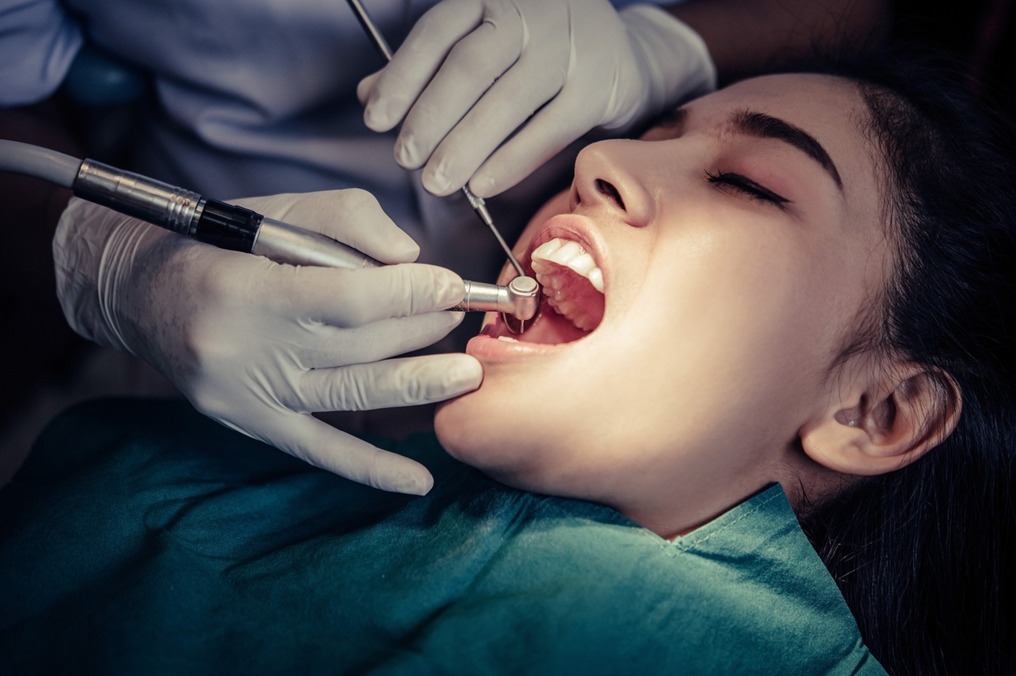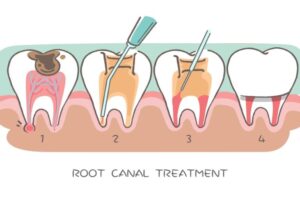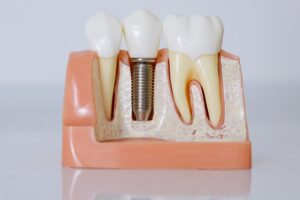
That sudden, sharp pain while chewing a favorite food can be unsettling—a split-second jolt that feels like a silent alarm. You don’t have to be scared of this strange feeling, though. A tooth that is cracked or broken may not show any signs of trouble until symptoms appear. At Dental Panache in Gurugram, we understand the delicate complexities of these hidden issues and believe that with advanced diagnostics and timely, specialized treatments, patients can protect their oral health and regain their confidence.
The diagnostic challenge of a cracked tooth lies in its diverse and sometimes ambiguous symptoms, which can easily be mistaken for other dental problems. If you don’t get the right help, a small crack can get worse and cause an infection or even tooth loss. Dental Panache has highly trained staff and the latest technology that allows for accurate diagnosis, making sure that problems that aren’t obvious are found before they become more serious.
In this comprehensive guide, informed by the skilled team at Dental Panache, we will explore the silent epidemic of cracked teeth. You will learn what causes them, the different types of fractures, and the advanced diagnostic tools that are used to find the threat. We will also go over the different types of specialized treatment that are available and explain how our team can help you keep your smile healthy and confident at every stage.
What is a cracked tooth, and what are its symptoms and causes?
A cracked tooth is more of a visual flaw; it is a structural problem that compromises the tooth’s integrity and leaves it vulnerable to further damage and infection. To stop and treat these fractures, the first thing you need to do is learn about all the different things that can cause them.
Common culprits behind cracked teeth
Many people grind and clench their teeth without even realizing it, usually while they sleep. This puts a lot of stress on their teeth. This long-term stress can cause hairline cracks and bigger fractures over time. If you grind or clench your teeth, the skilled staff at Dental Panache can make you a custom bite guard to keep your teeth from breaking or getting hurt badly.
Big fillings: Teeth that have had a lot of work done to them, like big fillings, can become very weak. When you bite down on the tooth structure that is still there, it is more likely to break because it doesn’t have the same support as a healthy tooth that hasn’t been fixed.
Biting down on hard things can break your teeth. For example, ice, unpopped popcorn kernels, or hard candies. Things that seem harmless, like chewing on pens or opening packages with your teeth can break a bone by putting too much stress on it.
Trauma or injury: A rapid harm to the face or mouth can break or crack a tooth. This can occur during a sports-related injury, a fall, or a motor vehicle accident.
Temperature extremes: sudden changes in temperatures can cause teeth to expand or contract suddenly which can harm our teeth and can cause teeth gaps. This can occur if you immediately go from eating something hot to drinking something cold.
Age: As people get older, their teeth are put under more pressure when they chew and bite, which makes them weaker and more likely to break. The likelihood of a cracked tooth naturally increases in individuals over the age of 50.
Diagnosing the unseen: How Dental Panache uses modern technology
Cracked teeth can be incredibly difficult to detect, as they may be microscopic and not visible to the naked eye. However, at Dental Panache, our modern infrastructure allows for a precise and thorough diagnostic process:
- Digital X-rays: While a standard X-ray may not always reveal a crack, our digital X-rays provide high-resolution images that can sometimes show bone loss or other irregularities that point to a fracture.
- Visual inspection and magnification: Our dental experts perform a detailed visual examination using magnification to identify even the most minute craze lines or fractures.
- Diagnostic tools: We use specialized tools, such as the “Tooth Slooth,” to pinpoint the exact location of the pain. We can find out which tooth, and even which cusp, is hurting you by having you bite down on the tool. This specially causes problems when pain gets even worse when you stop biting down.
- Staining dyes: Using a special dental dye can make a small crack stand out, making it easier to see.
- Transillumination: This technique involves shining a focused light source through the tooth. A crack will block the light and show up as a dark line, whereas a healthy tooth will transmit light uniformly.
By combining expert clinical examination with these advanced diagnostic technologies, the team at Dental Panache can accurately identify a cracked tooth and its extent, ensuring that you receive the most effective and timely treatment possible.
What kinds of cracks and breaks can happen in teeth?
Not all cracks are created equal. The treatment required and the long-term outlook for a damaged tooth depend entirely on the type, location, and extent of the fracture. The American Association of Endodontists (AAE) classifies cracked teeth into five categories to guide diagnosis and appropriate treatment. Understanding these distinctions is crucial for both patients and clinicians.
Craze lines
These are the most minor of tooth fractures, presenting as superficial, hairline cracks in the outer enamel. Much like a small spiderweb on a pane of glass, they are typically harmless, cosmetic imperfections that do not extend into the dentin. Craze lines are common in adult teeth and are usually a result of the natural aging process or years of wear and tear. They do not require treatment, though cosmetic options like veneers are available if their appearance is bothersome.
Fractured tooth or cusp
This happens when a part of teeth chewing skin or cusp, breaks off. It is often found in teeth with large restorations that have weakened the surrounding tooth structure. A fractured tooth or cusp is generally not painful unless the fracture line extends far enough to irritate the pulp. A full-coverage crown or a new filling can usually save the tooth by protecting the remaining structure, so the prognosis for a fractured tooth or cusp is usually favorable.
Cracked tooth
This is a crack that goes from the tooth’s biting surface to the root. Unlike a split tooth, the crack is incomplete, and the tooth remains in one piece. It can be hard to tell if there is a cracked tooth because an X-ray doesn’t always show the crack. In order to prevent bacteria from entering and damaging the pulp, which would require a root canal, early diagnosis and intervention are essential. The prognosis depends on the depth of the crack; if it has reached the root, extraction may be required.
Split tooth
A split tooth is the end result of a long-standing, untreated cracked tooth. The fracture is complete, having traveled from the crown all the way through the root and separating the tooth into two distinct segments. Unfortunately, a split tooth can rarely be saved and typically requires extraction. In some cases involving a multi-rooted tooth, a dental professional may be able to save a part of your teeth by removing the part that cant be saved anymore..
Vertical root fracture (VRF)
This is a crack that originates in the root and extends upward toward the chewing skin. Unlike other cracks, which progress from the top down, VRFs are insidious and can go undetected for a long time. They are most often found in teeth that have had a previous root canal. Diagnosing a VRF is difficult and often relies on subtle clinical signs like an isolated, deep periodontal pocket or a sinus tract. Specialized imaging, such as a Cone-Beam Computed Tomography (CBCT) scan, is often required for a definitive diagnosis. The prognosis for a tooth with a vertical root fracture is often poor, and extraction is the most common treatment option. In order to avoid significant bone loss, which may make future dental implant tooth replacement more difficult, early diagnosis is crucial.
What are the different ways to treat a broken tooth, from the simplest to the most complicated?
There is no one-size-fits-all treatment for a cracked tooth; the best way to treat it depends on the type and severity of the fracture. A correct diagnosis is the first step in getting better, and at Dental Panache, our dentists use a variety of tools and methods to make sure they are right.
Precision diagnosis at Dental Panache
When you come to our clinic with a suspected cracked tooth, the diagnostic process is thorough and precise:
- Visual inspection with magnification: Our dentists can use high-powered magnification to closely look at the surface of the tooth and find craze lines and small cracks that might be missed by the naked eye.
- Bite sticks: A specialized tool known as a “bite stick” helps isolate the source of pain. We can find the exact spot where the fracture is hurting by having you bite down on different parts of the tooth.
- Transillumination: This technique involves shining a bright, narrow beam of light through the tooth. The light will stop at a crack, making the fracture line visible as a dark shadow.
- Staining: Applying a temporary dental dye can help visualize a fine crack that is otherwise difficult to see, making it much easier to assess its extent.
Comprehensive cracked tooth treatment options
Based on the diagnosis, our experts will recommend the most appropriate cracked tooth treatment:
- Monitoring and bonding for minor cases:
If the crack is a superficial craze line confined to the enamel, active cracked tooth treatment may not be necessary. The tooth will be monitored during regular check-ups to ensure the crack does not deepen. If the crack is a little deeper but doesn’t go all the way through the pulp, dental bonding might be a good option. A tooth-colored synthetic resin is used to fill in the gap during this procedure. Then, the material is shaped and polished so that it fits perfectly with the real tooth. This process helps to look better and get the tooth to a better condition..
2. Dental crown:
If the cracks are bigger and go into the dentin, a dental crown is the best way to fix them. A crown is a full-coverage cap that fits over the part that is visible, holding it together like a protective helmet. The procedure for a full crown typically involves two appointments. The doctor will take off a thin layer of enamel from the tooth during the first visit to make room for the crown. After that, a digital scan or impression is made and sent to a dental lab to make a crown that fits perfectly. A temporary crown is put on the tooth to keep it safe for now. The second appointment is when the permanent crown is cemented into place. This closes the crack and makes the tooth strong and useful again.
- Root canal therapy:
If a crack goes deep enough to reach the pulp, the tooth’s nerve and blood vessels inside become inflamed or infected. A root canal is needed to keep the tooth in this case. There are a few steps in the root canal procedure:
- The dentist or endodontist numbs the area and makes a small hole in the tooth’s crown.
- Using special tools, the pulp that is infected or inflamed is carefully taken out of the pulp chamber and root canals.
- The insides of the canals are cleaned, disinfected, and shaped.
- The space is then filled with a biocompatible material called gutta-percha and sealed.
- The tooth gets weaker after a root canal because it is no longer “alive.” To keep the weak tooth from breaking again, a crown is put on it.
- Extraction and replacement:
If a tooth is badly split or the break goes deep into the root, it may not be possible to save it. You must eradicate the infection to prevent it from worsening and creating more issues. Following the extraction, we offer several options for replacement:
- Dental implant: This is often the most recommended solution for a single missing tooth. A titanium post is put into the jawbone during surgery to act as a new root. A custom crown is put on top after a time of healing. Implants last a long time and feel like real teeth.
- A dental bridge is a set of fake teeth that are attached to the real teeth on either side of the gap. This is a fixed, non-removable option that provides excellent function and aesthetics.
- Removable partial denture: This option is less invasive and less expensive. It has replacement teeth attached to a pink acrylic base. It can be removed for cleaning.
At Dental Panache, we’ll work with you to figure out the best way to fix your cracked tooth and make sure you understand every step of your personalized cracked tooth treatment plan.
What to do if you suspect a cracked tooth, what tips should be helpful?
You can’t always avoid getting cracked teeth, but you can lower your risk a lot by following a few simple rules and taking precautions. Taking proactive steps is the best way to safeguard your smile and avoid the need for more complex dental procedures.
Actionable prevention tips:
- Wear a mouthguard: If you play violent sports like football or hockey, you need a mouthguard that fits properly to protect your teeth from getting hit. A nightguard can help if you grind your teeth at night. can provide a crucial barrier to protect your teeth from the damaging pressure of clenching and grinding.
- Avoid chewing hard foods: Be mindful of what you bite into. Steer clear of hard candies, unpopped popcorn kernels, and ice, which can easily cause a tooth to fracture.
- Use your teeth properly: Your teeth are not tools. Avoid using them to open bottles, tear packaging, or bite your nails, as these actions put unnecessary strain on your teeth.
- Keep your mouth clean: Brushing your teeth twice a day and flossing once a day helps keep your teeth strong by stopping decay and erosion, which can weaken enamel and make it more likely to crack.
Why early intervention is important:
The most important takeaway is that a cracked tooth is a progressive issue; it will not heal on its own. A small crack can get worse quickly, causing more pain, an infection in the pulp, and possibly even losing a tooth. By recognizing symptoms like erratic pain while chewing or increased sensitivity and seeking prompt dental care, you can frequently save the tooth and prevent more extensive and costly treatments. Our team at Dental Panache is trained to find and fix cracks early, which is the best thing you can do for your oral health.
Conclusion
A cracked tooth is a progressive problem that will not resolve on its own. A minor irritation could eventually develop into a painful infection, serious structural damage, or even tooth loss. A successful outcome depends on early intervention.
Call to action:- If you have experienced a sudden sharp pain while chewing, noticed increased sensitivity to temperature changes, or suspect you have a cracked tooth, don’t wait for the pain to become unbearable. Contact Dental Panache in Gurugram today. Our team is dedicated to providing swift, accurate diagnosis and expert treatment to protect your smile and restore your peace of mind.
FAQ
This is the most critical question for any patient experiencing symptoms. The answer clarifies the common signs, such as erratic pain when chewing, sensitivity to temperature, or pain that is difficult to pinpoint. This information helps the reader determine if their discomfort warrants a dental visit.
This question addresses the progressive and serious nature of the problem. It clears up the false idea that a crack will heal on its own and talks about the risks of ignoring it, such as infection, abscesses, and the chance of losing the tooth completely. The answer strengthens the need for quick treatment.
This question distinguishes between different severities of cracks, which is a common source of confusion for patients. The answer makes it clear that not all cracks need to be fixed right away after hours. However, any crack that hurts a lot, swells up, or looks like it might be infected does. It helps patients prioritize their dental needs effectively.
This question directly tackles a widespread misconception. The answer is a clear "no," unlike a broken bone; a tooth fracture requires professional intervention. This A clear answer is important for managing patient expectations and stressing the need for treatment.
Focusing on prevention is a proactive and reassuring approach. This question gives you things to do, like wearing a mouthguard and not chewing on hard things. It tells patients what they need to know to keep their mouths healthy and lower their risk in the future.






